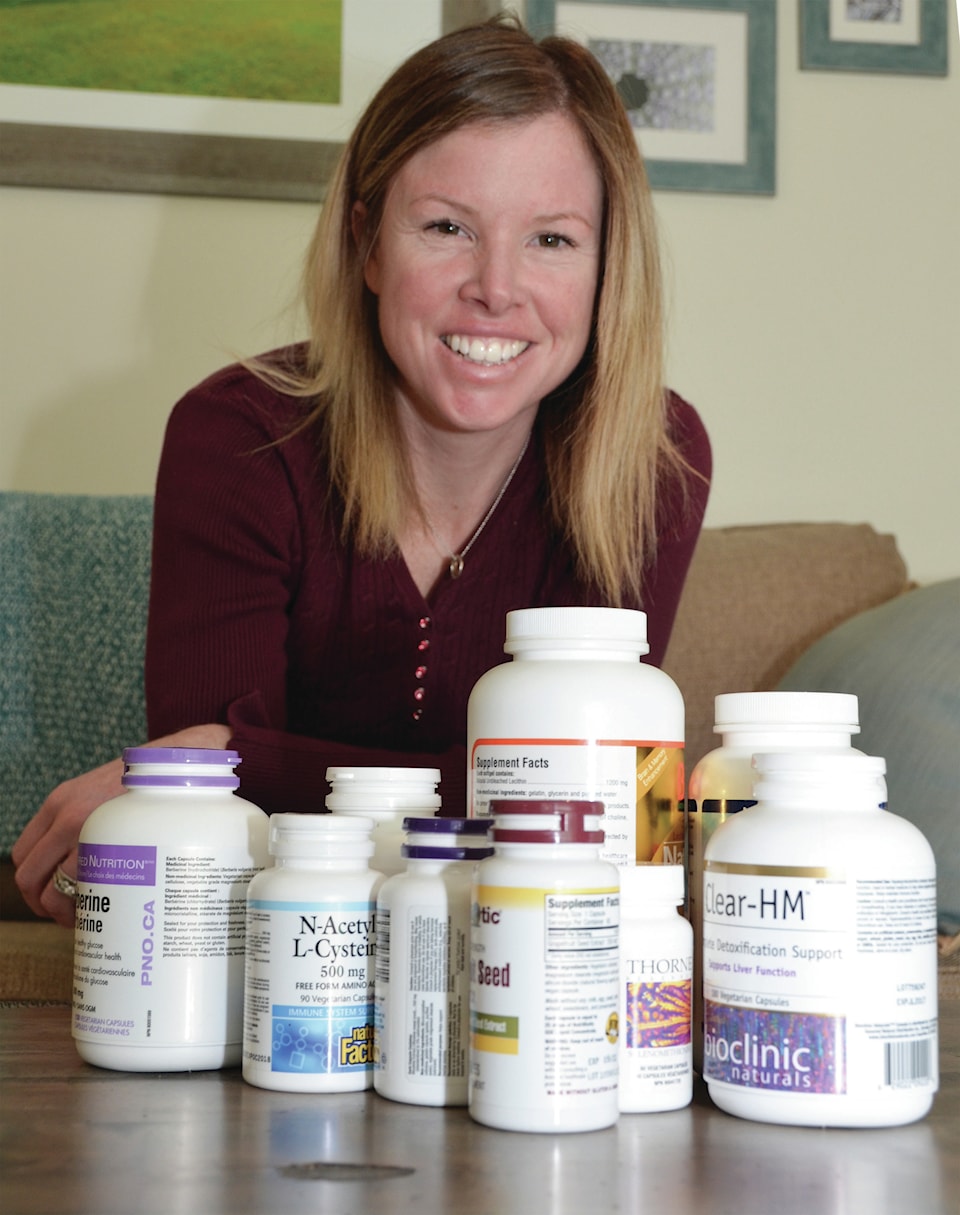Heather Leblanc has an eternal well of hope. She needs it.
Soon the Red Deer mother of two young children will head out of country for the third time, continuing her search for a way to stop the progressively debilitating affects of multiple sclerosis.
The 36-year-old was diagnosed 10 years ago with the incurable disease that strikes so many in their 20s, 30s and 40s. The cause of MS is unknown.
Multiple sclerosis unfortunately is also known as “Canada’s disease” because this country has the highest rate in the world — 240 cases for every 100,000 people. Alberta has an even higher rate at 340 cases per 100,000.
The Alberta Health Services 2103 report The Way Forward — Alberta’s Multiple Sclerosis Partnership, outlined efforts underway or planned to help people with the disease that harms the central nervous system. Speech, balance and vision can all be affected. Fatigue and paralysis are also part of MS, which is 2.5 times more common in women then men.
Ten years ago at the age of 26 and only two months after she and her husband, Troy Leblanc, were married, Heather awoke to find she could not see out of her right eye. The condition lasted a month. Doctors didn’t determine what was wrong, but they were monitoring her.
Her sight returned but then the next month she lost the sight in her left eye, also for a month. There were concerns she might have a brain tumour. A visit to a neurologist and more tests were done, but she still did not know what was wrong.
Then one day she woke up to get ready for work and after washing her face, she looked up and “I couldn’t see anything.” She was completely blind, but again, her sight soon returned.
Heather then underwent an MRI that showed that there were small lesions on her brain — a telltale sign of multiple sclerosis. She was diagnosed with relapsed-remitting multiple sclerosis (RRMS).
The symptoms of her MS come and go. Besides affecting her sight, over the years she’s lost the feeling in her body from her chest to her feet, and in her hands and her feet. She’s suffered constant tingling in her arms and legs, but that’s gone away.
The relapses occur and then things get better. “When you’re pregnant you go into remission so it’s quite a healthy state to be in,” said Heather.
William, 6, was born in 2009 and has just started Grade 2. Grace, 5, was born in 2011 and is in kindergarten. Heather worked up to 2009, but now she’s a stay-at-home mom.
She was relapse-free for about four years but in the past few years her mobility has declined and she now walks with a cane. She uses a wheelchair if she’s on a bigger outing, such as going to the mall.
“Everybody’s different. I have no pain. Lots of people have a lot pain in their body.”
Heather needs to physically stretch her legs for several minutes before she can actually get up in the morning. Then she takes her medication and supplements to get her body going.
After that, it’s making breakfast and school lunches for the kids before everybody goes out the door. She also does the books for her husband’s business. She rests a lot and takes exercise classes a couple times a week to help her. “I don’t do a whole lot.” Doctors tell her to carry on her life as best she can.
In 2011, Heather went to Mexico to get the treatment called CCSVI (chronic cerebrospinal venous insufficiency), also known as liberation treatment. The controversial treatment, and how beneficial it is, created polarizing views with many MS patients supporting it.
The process involved processes to unblock veins in her neck, said Heather. “That procedure of course didn’t stop the MS but it did relieve the tingling in my arms and leg and brought some of the feeling back to my hands.”
In 2014 she went to Florida where she has stem cell treatment. That involved removing the cells from her body and then putting them back into her spinal cord. The idea was that the good stem cells would take over the bad ones.
“I found that did nothing for me.” The costs of these treatments were paid out of her own pocket.
Now Heather will head to Mexico in November for a different form of stem cell treatment that she believes is more promising — HSCT (Hematopoietic stem cell transplantation)
At a university hospital there, medical staff will harvest some of her stem cells but this time she will then receive chemotherapy to break down her immune system. Then the healthy stem cells will be re-introduced into her body to rebuild that immune system. She’ll be there a month.
The treatment does not guarantee that she won’t get MS symptoms back, and that there won’t be side-effects. Heather’s hope is that it will stop the progression of MS. She said she has spoken with others either directly or through online forums and wants to do the treatment.
While there’s been a little bit of fundraising, her family will cover the US $54,500 cost, said Heather. Her mom, Val Croome, will go with her. Troy will work from home to be with the kids and other family members, including grandpa George Croome, will help out. Troy’s parents from Nova Scotia are also coming.
Heather said she doesn’t let her condition weigh on her, especially with small children around. She can’t go for walks or ride bikes with them. “But you know we work around it very well.” She’s hopeful that she will be able to do more with her kids when she returns.
“I’m every emotion you could think of — excited and scared to death and nervous and happy, and hopeful.”
barr@www.reddeeradvocate.com
